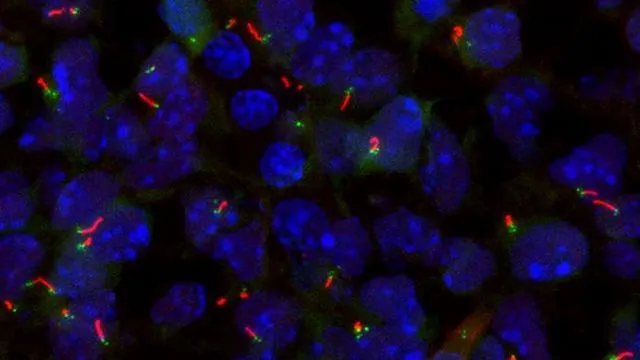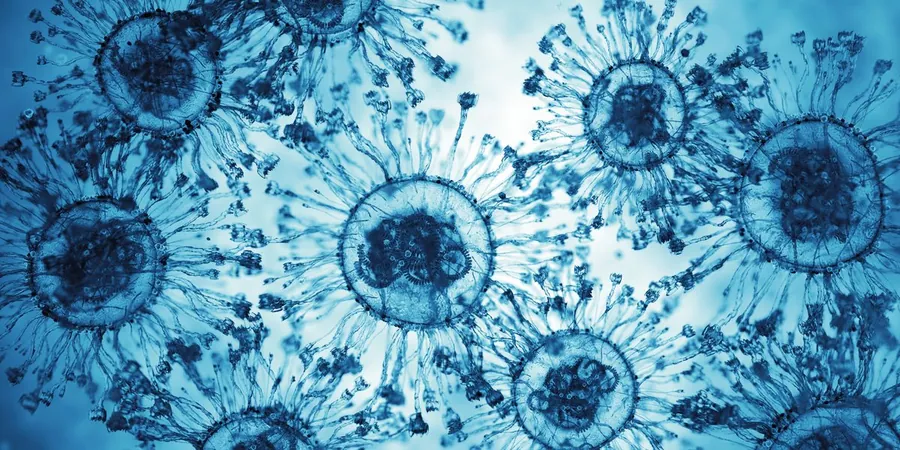
Unlocking the Secrets of Cilia Formation: Scientists Discover Key Players
2025-09-01
Author: Daniel
A Microscopic Marvel: The Importance of Primary Cilia
What looks like a simple finger, a worm, or even an antenna is actually known as the primary cilium. This slender, microscopic appendage protrudes from the surface of nearly every human cell, and for years, it was strangely absent from textbook diagrams. But scientists are finally uncovering the pivotal role it plays in human biology!
The Turning Point in Cilia Research
The interest in primary cilia surged around 2003 when Dr. Kathryn Anderson at Memorial Sloan Kettering Cancer Center (MSK) revealed their essential role in embryo development. These cilia are crucial for processing signals from the Hedgehog protein family, which is instrumental in forming the neural tube during early embryonic development.
The Medical Mystery of Ciliopathies
Educational advancements aside, the intrigue surrounding primary cilia continues, particularly due to their link to various medical issues known as ciliopathies. Affecting 1 in 2,000 people globally, these disorders can cause a range of problems, including hearing loss and organ displacement. However, a critical question remains unanswered: what triggers the formation of a primary cilium in cells?
Breakthrough Discovery: SP5 and SP8 Unveiled
In an exciting new study published in *Science*, MSK’s developmental biologists, Drs. Yinwen Liang and Alexandra Joyner, have taken a giant leap forward in solving the cilia puzzle. They identified two key transcription factors, SP5 and SP8, which serve as on-off switches for initiating cilium formation. Remarkably, activating these genes in cells that typically lack cilia prompted them to produce these vital structures.
Behind Closed Doors: The Science of Switches
Dr. Liang initially hypothesized that some cells might actively disassemble primary cilia, preventing their presence. However, attempts to block this disassembly showed minimal effect. Partnering with Dr. Joyner, they pivoted their focus towards how specific transcription factors regulate this process. Using advanced sequencing techniques, they identified over 100 genes associated with cilia, ultimately narrowing it down to SP5 and SP8.
A Game Changer in Cell Biology
The team conducted knockout experiments for these genes in ciliated cells and introduced Sp8 into non-ciliated ones. The results were nothing short of groundbreaking—SP8 alone could trigger the formation of primary cilia in previously non-responsive cells. Dr. Joyner exclaimed, "If you add SP8 to extraembryonic cells, many of the cells now make cilia. No one’s ever seen that result before!"
Looking Ahead: Advancements for Clinical Applications
With SP5 and SP8 identified as central to cilia formation, these discovery offers promising implications for treating ciliopathies. As Dr. Liang prepares to start her own lab in China, she aims to translate these findings into clinical applications, helping individuals suffering from these disorders. "My long-term goal is to improve our understanding of how cilia are formed and then use that information to benefit clinical studies of ciliopathies," she explained.
Conclusion: A Bright Future for Cilia Research
This groundbreaking study not only illuminates the mysteries of cilia formation but also opens new doors for potential treatments of associated diseases. As research continues to evolve, the future looks hopeful for those affected by ciliopathies and for the field of developmental biology as a whole.


 Brasil (PT)
Brasil (PT)
 Canada (EN)
Canada (EN)
 Chile (ES)
Chile (ES)
 Česko (CS)
Česko (CS)
 대한민국 (KO)
대한민국 (KO)
 España (ES)
España (ES)
 France (FR)
France (FR)
 Hong Kong (EN)
Hong Kong (EN)
 Italia (IT)
Italia (IT)
 日本 (JA)
日本 (JA)
 Magyarország (HU)
Magyarország (HU)
 Norge (NO)
Norge (NO)
 Polska (PL)
Polska (PL)
 Schweiz (DE)
Schweiz (DE)
 Singapore (EN)
Singapore (EN)
 Sverige (SV)
Sverige (SV)
 Suomi (FI)
Suomi (FI)
 Türkiye (TR)
Türkiye (TR)
 الإمارات العربية المتحدة (AR)
الإمارات العربية المتحدة (AR)